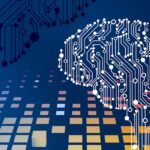Generative AI represents a transformative leap in the field of artificial intelligence, characterized by its ability to create new content, whether it be text, images, music, or even complex simulations. Unlike traditional AI systems that primarily analyze and categorize existing data, generative AI employs sophisticated algorithms, such as deep learning and neural networks, to produce original outputs based on learned patterns from vast datasets. This technology has gained significant traction across various sectors, including education, where it holds the potential to revolutionize teaching methodologies and learning experiences.
In the context of multilingual classrooms, generative AI can serve as a powerful tool to bridge language barriers and enhance communication among students from diverse linguistic backgrounds. By leveraging natural language processing (NLP) capabilities, generative AI can facilitate real-time translation, generate personalized learning materials, and even simulate conversational practice in multiple languages. As educational institutions increasingly embrace digital tools, understanding the implications of generative AI becomes crucial for educators aiming to create inclusive and effective learning environments.
Advantages of Generative AI for Multilingual Classrooms
One of the most significant advantages of generative AI in multilingual classrooms is its ability to provide personalized learning experiences tailored to individual student needs. For instance, generative AI can analyze a student’s proficiency level in a particular language and generate customized exercises that target specific areas for improvement. This adaptability ensures that learners are not only engaged but also challenged at an appropriate level, fostering a more effective learning process.
By catering to diverse linguistic abilities, generative AI can help students progress at their own pace, ultimately leading to better educational outcomes. Moreover, generative AI can enhance collaborative learning by facilitating communication among students who speak different languages. For example, AI-driven platforms can provide real-time translation services during group activities, allowing students to share ideas and collaborate without the constraints of language barriers.
This capability not only promotes inclusivity but also encourages cultural exchange and understanding among peers. As students work together on projects or discussions, they gain insights into each other’s perspectives, enriching their educational experience and fostering a sense of community within the classroom.
Challenges of Implementing Generative AI in Cross-Cultural Classrooms
Despite its numerous advantages, the implementation of generative AI in cross-cultural classrooms is not without challenges. One significant hurdle is the potential for bias in AI algorithms, which can arise from the datasets used to train these systems.
This bias can hinder the effectiveness of AI tools and perpetuate existing inequalities in educational settings. Another challenge lies in the technological infrastructure required to support generative AI applications. Many schools, particularly those in underserved areas, may lack the necessary resources—such as high-speed internet access or modern computing devices—to effectively implement these advanced technologies.
Additionally, educators may require extensive training to utilize generative AI tools effectively. Without adequate support and resources, the potential benefits of generative AI may remain unrealized, leaving some students at a disadvantage compared to their peers in more technologically advanced environments.
Case Studies of Successful Implementation of Generative AI in Multilingual Classrooms
Several educational institutions have successfully integrated generative AI into their multilingual classrooms, showcasing its potential to enhance learning outcomes. One notable example is a pilot program implemented at a bilingual school in Canada, where educators utilized an AI-driven language learning platform to support students in both English and French. The platform generated personalized vocabulary exercises based on each student’s progress and provided instant feedback on their performance.
As a result, students demonstrated significant improvements in their language skills over the course of the program. Another compelling case study comes from a school in Singapore that adopted generative AI tools to facilitate collaborative projects among students from diverse linguistic backgrounds. By using an AI-powered translation application during group work, students were able to communicate effectively despite speaking different languages.
The application not only translated text but also provided contextual suggestions to enhance clarity and coherence in their discussions. Feedback from both students and teachers indicated that this approach fostered greater engagement and collaboration, ultimately leading to a more inclusive classroom environment.
Ethical Considerations in Using Generative AI in Cross-Cultural Classrooms
The integration of generative AI into educational settings raises several ethical considerations that must be addressed to ensure responsible use of technology. One primary concern is data privacy; as generative AI systems often rely on large datasets that may include personal information about students, it is crucial for educators and institutions to implement robust data protection measures. Ensuring that student data is anonymized and securely stored can help mitigate risks associated with privacy breaches.
Additionally, educators must be vigilant about the potential for perpetuating stereotypes or cultural biases through AI-generated content. For instance, if an AI system generates examples or scenarios that reflect narrow cultural perspectives, it may inadvertently reinforce harmful stereotypes or exclude certain groups from representation. To counteract this risk, it is essential for educators to critically evaluate the outputs produced by generative AI and incorporate diverse perspectives into their teaching materials.
By fostering an environment of critical thinking and cultural awareness, educators can help students navigate the complexities of technology while promoting inclusivity.
Training and Support for Educators Using Generative AI
To maximize the benefits of generative AI in multilingual classrooms, comprehensive training and support for educators are essential. Professional development programs should focus on equipping teachers with the skills necessary to effectively integrate AI tools into their teaching practices. This training could include workshops on using specific generative AI applications, understanding the underlying technology, and developing strategies for addressing potential challenges related to bias or data privacy.
Furthermore, ongoing support networks can play a vital role in helping educators share best practices and troubleshoot issues as they arise. Collaborative platforms where teachers can exchange experiences and resources related to generative AI can foster a sense of community among educators navigating this new landscape. By providing continuous professional development opportunities and fostering collaboration among teachers, educational institutions can empower their staff to leverage generative AI effectively and responsibly.
Customization and Adaptation of Generative AI for Different Languages and Cultures
The effectiveness of generative AI in multilingual classrooms hinges on its ability to adapt to various languages and cultural contexts. Customization is crucial; developers must ensure that their algorithms are trained on diverse datasets that accurately represent the linguistic nuances and cultural subtleties of different communities. For instance, idiomatic expressions or culturally specific references may not translate directly between languages, necessitating a more nuanced approach to content generation.
Moreover, educators should have the flexibility to modify generative AI outputs to align with their specific classroom needs. This could involve adjusting the complexity of generated texts or incorporating culturally relevant examples into learning materials. By allowing for such customization, educators can create a more meaningful learning experience that resonates with their students’ backgrounds and experiences.
Potential Impact of Generative AI on Language Learning and Cultural Understanding
Generative AI has the potential to significantly impact language learning by providing immersive experiences that promote both linguistic proficiency and cultural understanding. For example, through interactive simulations powered by generative AI, students can engage in realistic conversations with virtual characters representing different cultures. These interactions not only enhance language skills but also expose learners to diverse cultural practices and perspectives.
Additionally, generative AI can facilitate access to authentic materials from various cultures, such as literature, music, or art. By curating content that reflects different cultural narratives, educators can encourage students to explore global perspectives while developing their language skills. This exposure fosters empathy and appreciation for diversity, ultimately contributing to a more interconnected world where cultural understanding is paramount.
Collaborative Learning and Communication in Multilingual Classrooms with Generative AI
Generative AI can transform collaborative learning experiences in multilingual classrooms by enhancing communication among students who speak different languages. Through real-time translation tools integrated into collaborative platforms, students can engage in discussions without being hindered by language barriers. This capability allows for richer exchanges of ideas and fosters teamwork as students work together on projects or problem-solving activities.
Moreover, generative AI can facilitate peer feedback processes by generating prompts or questions that guide students in providing constructive critiques of each other’s work. This not only enhances communication skills but also encourages a culture of collaboration where students learn from one another’s perspectives. As they navigate group dynamics across linguistic divides, learners develop essential social skills that extend beyond the classroom.
Future Developments and Trends in Generative AI for Multilingual Classrooms
As technology continues to evolve rapidly, the future of generative AI in multilingual classrooms holds exciting possibilities. One emerging trend is the integration of augmented reality (AR) and virtual reality (VR) with generative AI applications. These immersive technologies can create engaging environments where students practice language skills in realistic scenarios while interacting with virtual characters representing different cultures.
Additionally, advancements in machine learning algorithms will likely lead to even more sophisticated natural language processing capabilities. This could result in more accurate translations and context-aware content generation that better reflects cultural nuances. As these technologies develop further, educators will have access to increasingly powerful tools that enhance language learning experiences while promoting cross-cultural understanding.
The Role of Generative AI in Fostering Inclusive and Diverse Educational Environments
Generative AI has emerged as a pivotal force in reshaping educational landscapes, particularly within multilingual classrooms where diversity is celebrated yet often presents challenges. By harnessing its capabilities for personalized learning experiences, enhanced communication, and cultural exploration, educators can create inclusive environments that cater to the unique needs of all students. However, careful consideration must be given to ethical implications and potential biases inherent in these technologies.
As we look toward the future, ongoing collaboration between educators, technologists, and policymakers will be essential in ensuring that generative AI serves as a tool for empowerment rather than division. By prioritizing training and support for educators while fostering customization options that reflect diverse languages and cultures, we can unlock the full potential of generative AI in education—ultimately paving the way for a more inclusive and equitable learning experience for all students.









